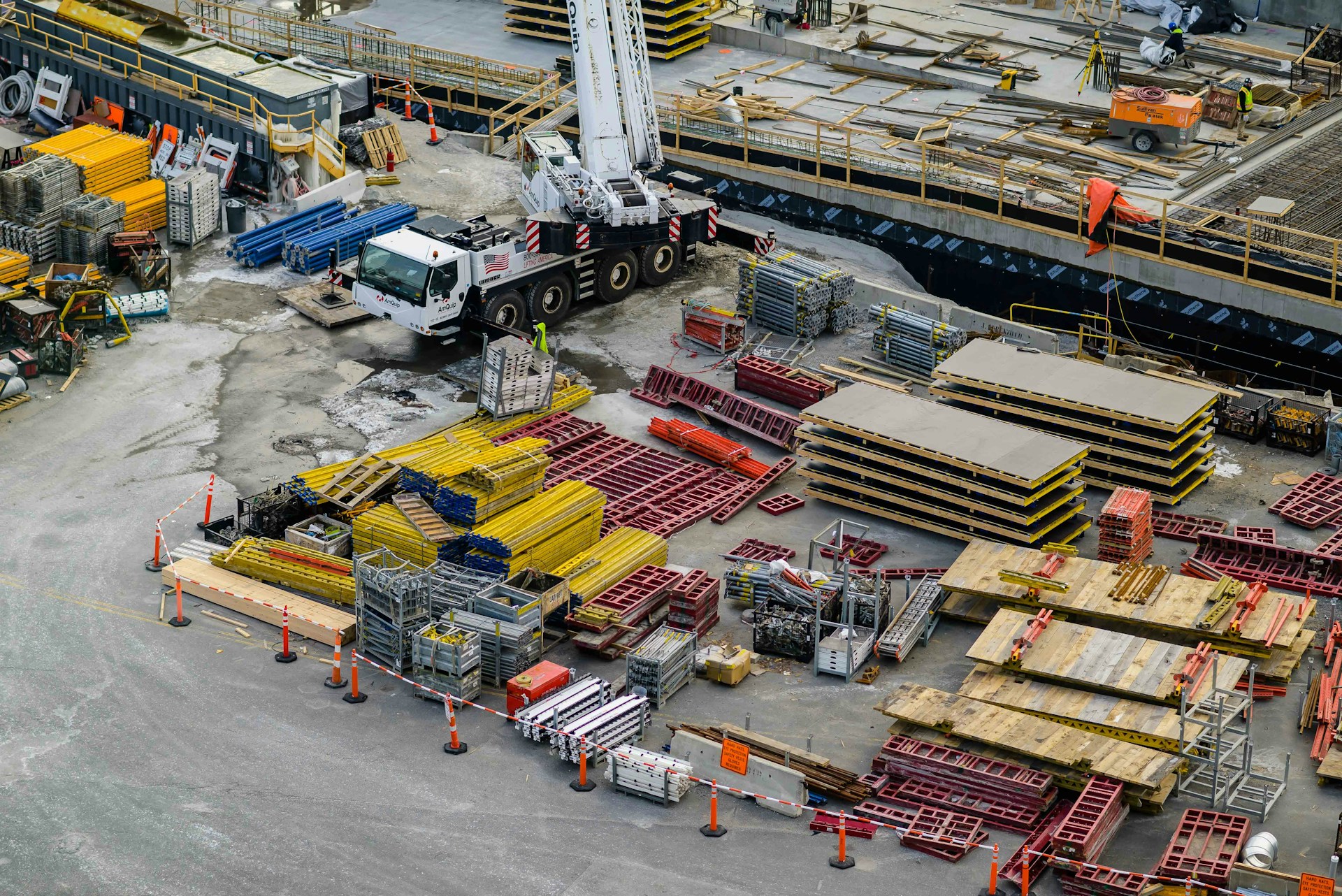5901 Botham Jean Blvd, Dallas, TX 75215
Innovative Construction Waste Reuse Projects
June 22, 2025Did you know that construction and demolition activities generate over 600 million tons of waste annually in the United States alone? This staggering amount accounts for nearly 40% of all solid waste produced. Innovative construction waste reuse projects tackle this enormous challenge by transforming what would become landfill debris into valuable resources.
Construction waste reuse projects represent a creative shift in the building industry. These initiatives involve the strategic collection, processing, and repurposing of materials from demolition and construction sites that would otherwise be discarded. From concrete and wood to metal and glass, these materials find new life in sustainable building practices.
At their core, these projects serve a dual purpose. They significantly reduce the environmental burden of construction waste while simultaneously providing cost-effective building materials for new construction. This approach creates a circular economy where one project’s waste becomes another’s resource.
What Types of Materials Can Be Reused in Construction Projects?

Construction projects generate significant waste, but many materials have valuable second lives when properly salvaged. Reusing construction materials not only reduces landfill waste but also decreases the need for new resources. Here are the most common construction materials that can be effectively recycled and repurposed:
Concrete and Asphalt
Concrete and asphalt are among the most widely recycled construction materials. When buildings, roads, or sidewalks undergo demolition, these materials can be crushed and processed for reuse.
Recycled concrete serves numerous applications in new construction projects. It functions effectively as base material for roads and driveways, aggregate for new concrete mixtures, and even as drainage media. The reuse of these heavy materials significantly reduces transportation costs and environmental impact.
- Recycled concrete: Used for road base, drainage layers, and aggregate in new concrete mixes
- Recycled asphalt: Repurposed for new paving projects, reducing the need for new petroleum products
Reclaimed Wood
Wood salvaged from old structures has unique aesthetic appeal and often superior quality compared to newly harvested timber. Sourced from mature trees, reclaimed wood typically offers greater durability and character than modern alternatives.
Builders and designers prize reclaimed wood for both structural elements and decorative applications. Beams from old barns can become dramatic ceiling features, while weathered planks transform into distinctive flooring or wall treatments. Smaller wood pieces find new purpose in furniture, cabinetry, and accent elements.
- Structural timber: Repurposed as exposed beams, columns, or framing material
- Flooring and paneling: Creates distinctive interior finishes with historical character
- Decorative elements: Transformed into furniture, trim, and architectural details
Recycled Metal
Metal is among construction’s most valuable recyclable materials, with recycling rates exceeding 90% for structural steel. Recycled metal maintains its strength properties, making it ideal for structural applications.
Steel, aluminum, copper, and brass recovered from demolition sites can be melted down and reformed into new construction materials. Recycling metal significantly reduces energy consumption compared to processing raw ore. Even scrap pieces find purpose in artistic installations and decorative elements.
- Structural steel: Reprocessed into new beams, reinforcement bars, and framing
- Copper and brass: Recycled for plumbing, electrical components, and decorative hardware
- Aluminum: Repurposed for window frames, roofing, and various building components
Glass and Ceramics
Recycled glass from construction sites serves multiple purposes in new building projects. Crushed glass creates decorative finishes when mixed into concrete or used as landscaping material. Intact glass units can be directly reused in appropriate applications.
Ceramic materials like tiles and fixtures can also find second lives when carefully removed. Vintage tiles often carry unique patterns no longer produced, making them valuable for restoration projects and specialty designs.
- Crushed glass: Added to concrete for decorative terrazzo-like surfaces or used as filter media
- Window units: Reused in greenhouse construction, partitions, or art installations
- Ceramic tiles: Repurposed in mosaic designs or smaller renovation projects
Plastic Composites
Construction plastics represent a growing recycling opportunity. Clean plastic waste can be processed into composite lumber products, offering durable alternatives to wood for outdoor applications. These materials resist rot, insects, and moisture damage.
Plastic film, packaging, and containers from building sites can be transformed into new construction products ranging from insulation to landscape edging. Plastic composites provide excellent durability in harsh environments while putting waste materials to productive use.
- Composite decking: Created from recycled plastics and wood fibers for outdoor structures
- Landscape timbers: Made from recycled plastics for edging and retaining walls
- Insulation: Manufactured using recycled plastic bottles and similar waste streams
Specialty Materials
Beyond these major categories, numerous specialty materials from construction sites can find new purposes. Gypsum from drywall can be processed into new panels or used as soil amendment. Carpet and fabric materials might become insulation products or component parts for manufacturing.
Even packaging materials like cardboard have recycling value. Paper-based products can be processed into new packaging or cellulose insulation, completing the circular economy for construction materials.
- Gypsum board: Recycled into new drywall or used as a soil amendment in agriculture
- Carpet and textiles: Converted to insulation or used in manufacturing new carpet backing
- Cardboard: Processed into new packaging or cellulose insulation materials
Incorporating these recycled and repurposed materials into construction projects creates buildings with reduced environmental footprints. As recycling technologies advance, even more construction waste streams will become valuable resources for sustainable building practices.
What Are the Benefits of Construction Waste Reuse Projects?

Construction waste reuse projects offer significant environmental and economic benefits. These initiatives divert considerable waste from landfills. The construction and demolition (C&D) industry saw a 342% increase in waste production from 1990 to 2018, according to EPA data. Through effective reuse programs, companies can greatly reduce this environmental impact.
A primary benefit is resource conservation. Construction materials often come from finite sources. By reusing concrete, wood, metals, and other materials, we protect valuable natural resources. This conservation extends beyond the materials to the energy typically needed for raw material extraction and processing.
Carbon emission reduction is another critical advantage. Manufacturing new building materials, especially cement and steel, generates substantial greenhouse gas emissions. Reusing existing materials requires far less energy, directly leading to a smaller carbon footprint for projects implementing reuse strategies.
Economic Advantages
The financial benefits of construction waste reuse are notable. Companies can reduce disposal costs by minimizing landfill fees and transportation expenses. These savings can be significant, with studies showing that recycling concrete saves contractors $8-$12 per ton compared to landfill disposal.
Reusing materials also creates potential revenue streams. High-value reclaimed materials like metals and quality wood can be sold to recycling facilities or directly to other builders, transforming what was once waste into a valuable asset. Projects incorporating reused materials often qualify for green building certifications, which can increase property value.
Operational efficiency improves with comprehensive waste reuse programs. Better resource planning and material tracking lead to less waste overall. This streamlined approach reduces project timelines and enhances site safety by minimizing hazardous accumulation of discarded materials.
Design Innovation and Brand Enhancement
Construction waste reuse projects foster creative design solutions. Architects and builders must innovate when incorporating salvaged materials, often resulting in unique, character-rich buildings that stand out. Reclaimed wood beams, repurposed brick facades, and other reused elements add distinctive aesthetic appeal that new materials cannot match.
The Bullitt Center in Seattle exemplifies this potential. Often called the greenest commercial building in the world, it achieved a 100% recycling rate for construction waste, incorporating salvaged materials while meeting the rigorous standards of the Living Building Challenge.
Companies prioritizing construction waste reuse establish themselves as environmental leaders, attracting clients, investors, and partners who value sustainability. As environmental regulations tighten, businesses with established reuse practices position themselves advantageously within the industry.
Social and Community Impact
Construction waste reuse creates positive social impacts. The recycling industry generates jobs in waste collection, sorting, processing, and manufacturing, contributing to local economic growth.
Communities benefit from cleaner environments when construction waste is properly managed. Reducing pollution from landfills and manufacturing processes improves public health outcomes. Some reuse projects directly benefit communities by creating public spaces using recycled materials.
Educational opportunities arise from waste reuse projects, demonstrating circular economy principles in action. They serve as powerful examples for universities, technical schools, and the wider construction industry. Successful case studies inspire further innovation in sustainable building practices.
Construction waste reuse aligns with global sustainability goals, notably the United Nations’ Sustainable Development Goals addressing responsible consumption, climate action, and sustainable cities. This alignment positions the construction industry to contribute meaningfully to addressing urgent environmental challenges.
Conclusion: The Future of Construction Waste Reuse

The construction industry is at a pivotal point of innovation and environmental responsibility. As sustainability becomes crucial, construction waste reuse initiatives are transforming how the sector manages materials. The shift from seeing construction debris as waste to viewing it as a valuable resource signifies a fundamental change in industry mindset.
From recycled concrete aggregates that lower carbon emissions to innovative uses of repurposed plastics, these initiatives show that creative waste management can lead to sustainable, cost-effective, and aesthetically pleasing designs. The adoption of circular economy principles, where materials retain their value through multiple lifecycles, demonstrates that construction waste can be turned from an environmental burden into a resource optimization opportunity.
The future of construction will likely see these practices become standard. Contact Okon Recycling at 214-717-4083 for innovative recycling solutions that can help your organization embrace sustainable construction practices.
